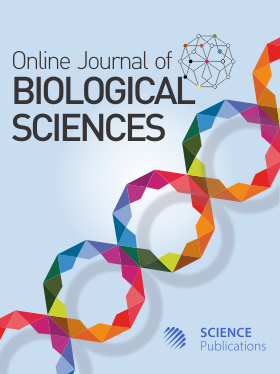Effects of Dietary Isoleucine Supplementation on the Growth Performance, Carcass Characteristics and Ileal Morphology of Native Chickens
- 1 Department of Animal Science, Faculty of Agriculture, Since and Health, University of Timor, Kefamenanu, Indonesia
- 2 Department of Biology, Faculty of Agriculture, Since and Health, University of Timor, Kefamenanu, Indonesia
Abstract
The roles of isoleucine in the protein synthesis, metabolisms, and growth of chicken have been widely reported. However, its effect on native chicken has not been previously reported. In this work, we reported the effects of dietary isoleucine supplementation on growth performance, carcass characteristics, and ileal morphology in native chickens during the grower phase (6-12 weeks). Two hundred native chickens with the age of 6 weeks (average initial weight of 319.7±1.81 g) were used. The chickens were divided into five treatments with five replicates of 8 birds each in a fully randomized design. The diet treatments were T0 as the control feed, T1 (T0+0.15% isoleucine), T2 (T0+0.25% isoleucine), T3 (T0+0.35% isoleucine), and T4 (T0+0.45% isoleucine). In this experiment, we assessed the body weight, body weight gain, feed intake, feed conversion ratio, carcass weight, and carcass percentage. A one-way analysis of variance and Duncan’s test were used to examine the data. The greatest body weight and body weight gain in the T3 group were 1032.2±8.70 g/bird and 712.5±8.25g/bird/6 weeks, respectively. The highest feed intake and feed conversion ratio in the T3 group were 2934.8±45.15 g/bird/6 weeks and 4.12±0.26, respectively. The highest carcass weight and carcass percentage in the T3 group were 625.5±10.81 g/bird and 61.0±1.07%/bird, respectively. The T2 and T3 groups had the greatest villus heights (1378.0±35.54 and 1385.8±39.08 μm, respectively) and greatest crypt depths (311.4±4.66 and 261.6±3.97 μm, respectively). The body weight, weight gain, feed intake, feed conversion ratio, carcass weight, carcass percentage, villus height, and crypt depth were significantly affected by the isoleucine level (p<0.05), but villus width was not. Therefore, 0.35% isoleucine supplementation in the diet of native chickens resulted in optimal growth performance at the grower phase.
DOI: https://doi.org/10.3844/ojbsci.2025.531.540

- 65 Views
- 29 Downloads
- 0 Citations
Download
Keywords
- Isoleucine
- Native Chickens
- Growth Performance
- Carcass
- Grower Phase
